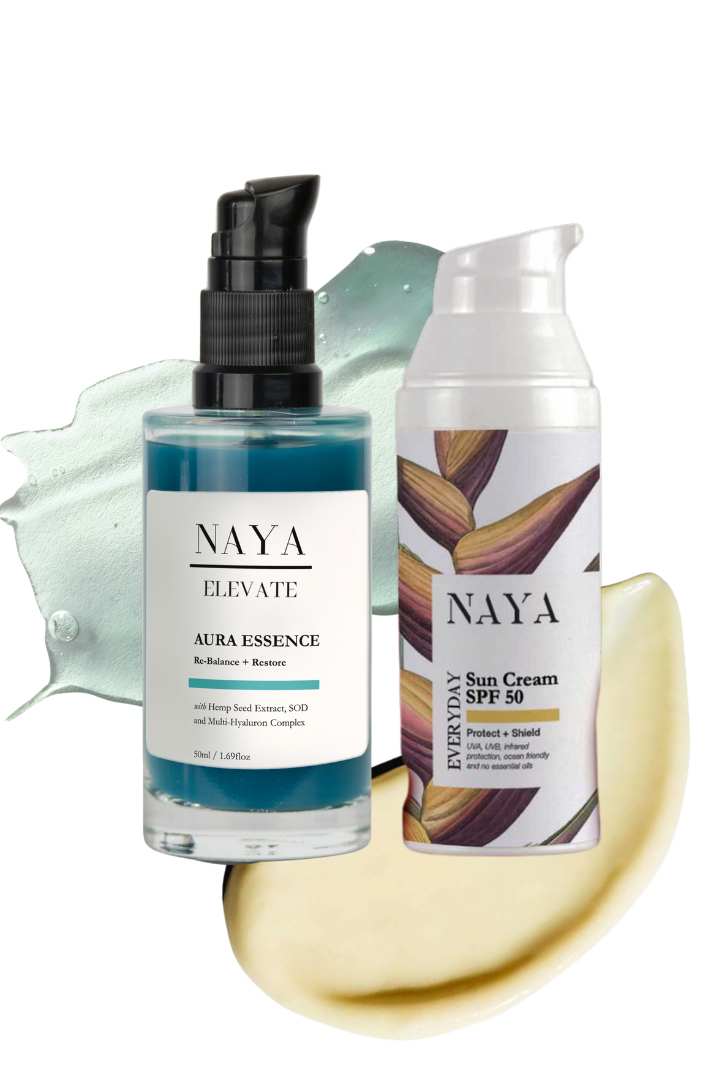Gua Sha's are a beauty tool that can help improve blood circulation, reduce puffiness and inflammation, and promote lymphatic drainage. Here's a step-by-step guide on how to use one.
A guide to Gua Sha
An ancient Chinese medicine technique, Gua Sha involves gliding a smooth stone along the face, neck, and décolletage to help relieve muscle tension, reduce inflammation, and enhance circulation.
Armed with a background in natural medicine and beauty therapy, Sarah, founder of NAYA Skincare, shares her top tips for using the massage tool to help lift, sculpt, and tone your face while reducing puffiness.
When using the Gua Sha tool, it is important to hold it at a 15–30 degree angle to your skin. This ensures that you are using the edge of the tool to apply gentle pressure, which can help stimulate circulation and promote lymphatic drainage. Be sure to use light pressure and avoid applying too much force, which can cause discomfort or irritation.
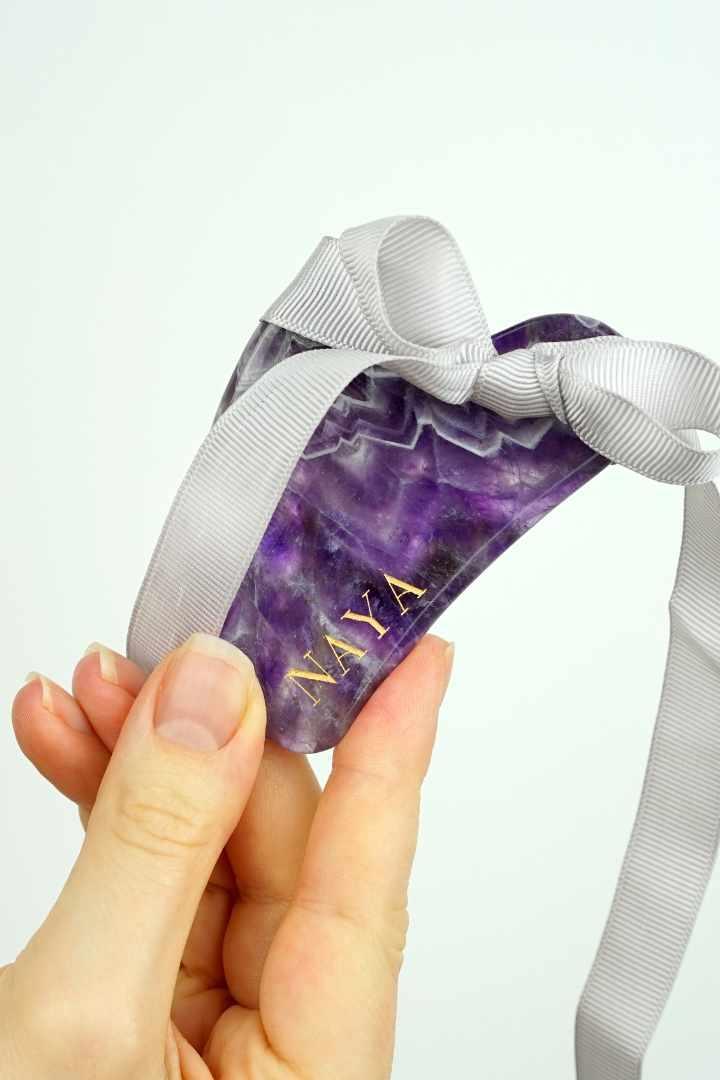
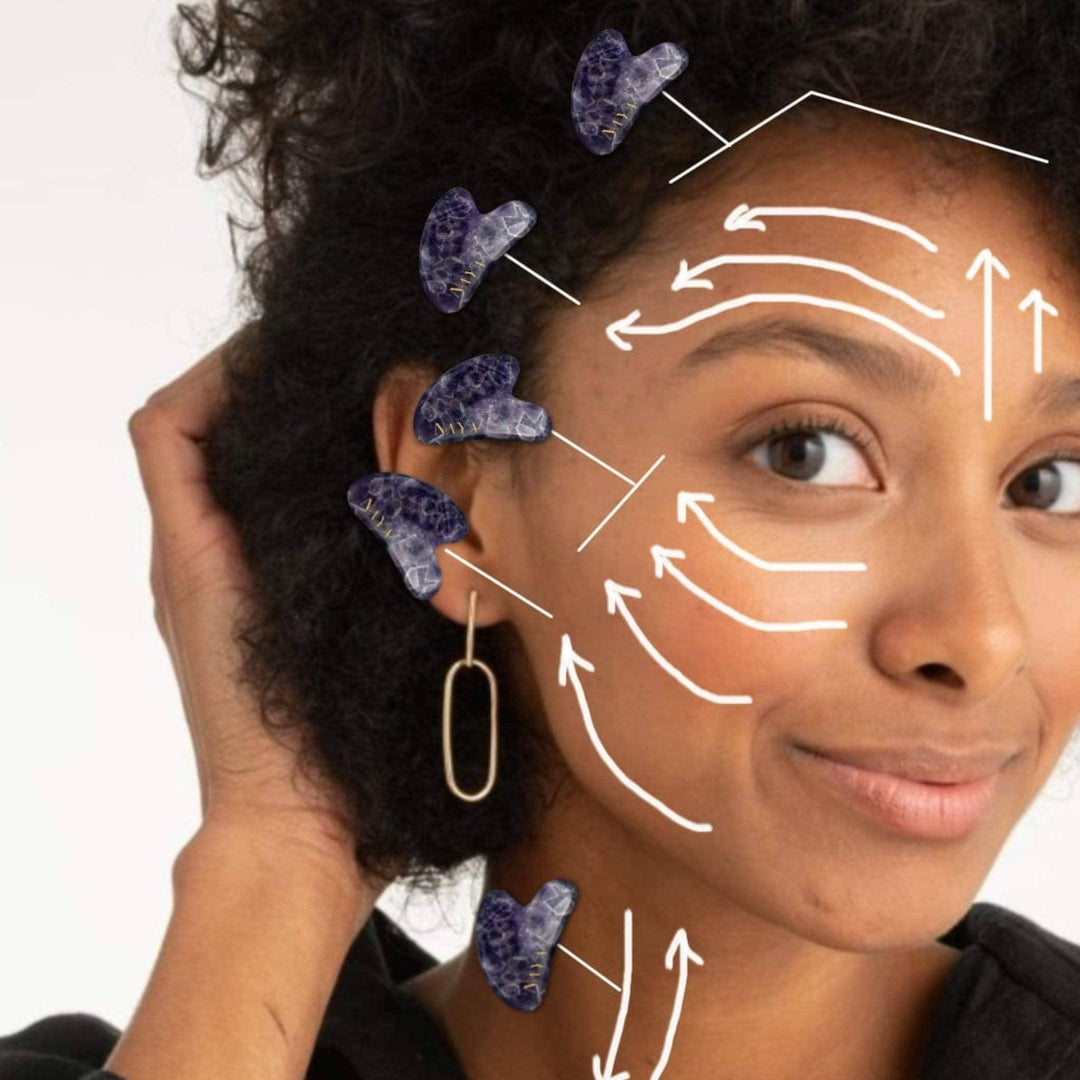
Continued...
Using NAYA’s Gua Sha in Amethyst, this step-by-step guide shows how to effectively use a Gua Sha, with the beginner-friendly shape ensuring ease of use — making it the perfect tool for all skill levels.
You can also experiment with different techniques, such as using shorter or longer strokes, or circular or back-and-forth movements. The key is to listen to your body and adjust your technique as needed to ensure a comfortable and effective massage.
"Gua Sha's are a beauty tool that can help improve blood circulation, reduce puffiness and inflammation, and promote lymphatic drainage. Here's a step-by-step guide on how to use one."
- Sarah, Founder of NAYA Skincare
Follow These Steps:
Step 1: Cleanse your face
Before using the Gua Sha, make sure your face is clean and free of makeup by cleansing. Pair your cleanser with our Renusable Organic Cotton Pads for an extra-thorough cleanse.
Step 2: Apply facial oil or serum
Next, apply a few drops of our Everyday Face Oil or your favourite serum to your skin. This will help the Gua Sha glide smoothly over your skin and prevent any friction or irritation.
Step 3: Hold the Gua Sha at the right angle
When using the Gua Sha tool, it's important to hold it at a 15-30 degree angle to your skin. This ensures that you're using the edge of the tool to apply gentle pressure to the skin, which can help stimulate circulation and promote lymphatic drainage. Be sure to use light pressure and avoid applying too much force, which can cause discomfort or irritation.
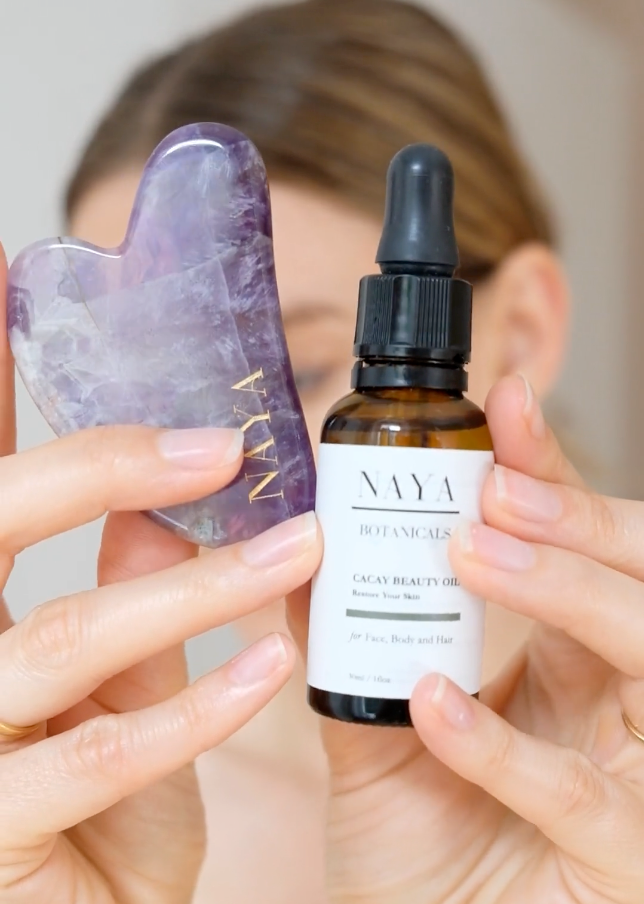
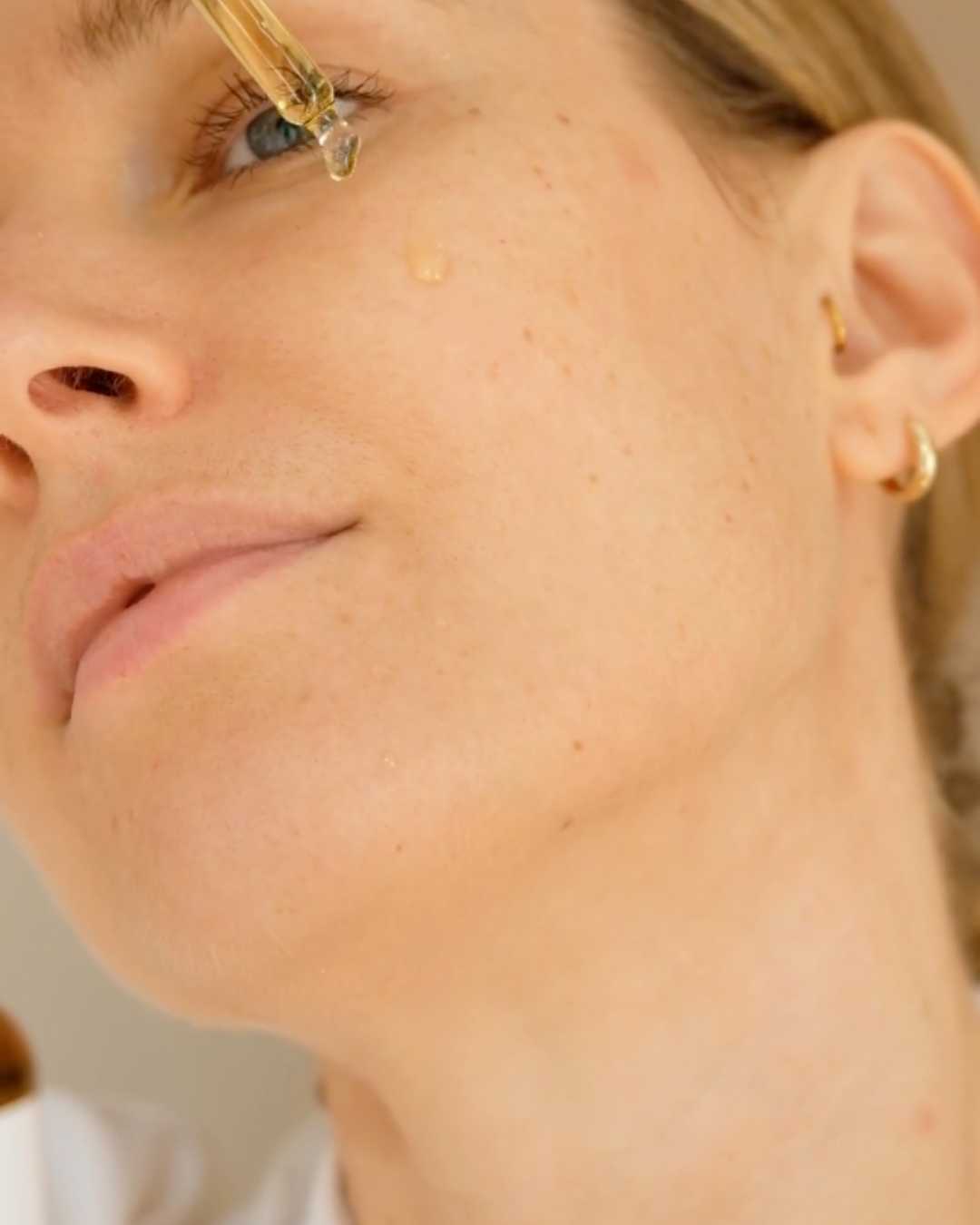
Step 4: Start with the neck and décolletage
Begin by using the curved edge of the Gua Sha to gently scrape along the contours of your neck and décolletage. Use upward strokes and light pressure, moving from the base of your neck up towards your chin and jawline.
Step 5: Move on to the jawline and cheeks
Next, use the flat side of the Gua Sha to gently scrape along your jawline and cheeks. Start at the center of your chin and move outward towards your ears, using light pressure and upward strokes. Repeat on the other side.
Step 6: Use the small curves for the eye area
For the delicate skin around your eyes, use the short edge of the Gua Sha to gently scrape from the inner corner of your eye outwards. Be very gentle and use light pressure, avoiding the eye itself.
Step 7: Use the U edge for the neck
Run the U edge down the sides of the neck, and any other angled areas.
Step 8: Move on to the forehead
Finally, use the long edge of the Gua Sha to gently scrape along your forehead, starting at the center and moving outwards towards your hairline. Use light pressure and upward strokes.
Step 9: Finish with a moisturiser or night cream
After using the Gua Sha, finish with a moisturiser or cacay oil+A to help lock in moisture and provide extra nourishment to your skin.
Step 10: Cleanse the Gua Sha
After using the Gua Sha, be sure to clean it thoroughly with soap and water or a gentle cleanser. Dry it with a soft cloth and store it in a cool, dry place.

When using a Gua Sha, it's generally recommended to stroke each section of your face 3-5 times before moving on to the next area. However, you can adjust the number of strokes to suit your personal preference and the needs of your skin. It's important to avoid overstimulating the skin by using the Gua Sha too frequently or applying too much pressure. Instead, use light pressure and take your time to work slowly and gently across each section of your face. You can also experiment with different techniques, such as using shorter or longer strokes, or using circular or back-and-forth movements. The key is to listen to your body and adjust your technique as needed to ensure a comfortable and effective massage.
Your Everyday Ritual
The Skin Benefits Of Using A Gua Sha
A traditional medicine technique which has been used for thousands of years, gua sha continues to gain popularity in the world of modern beauty and skin care.
Both a noun and a verb, gua sha involves the scraping of a small, flat, solid hand-held tool, usually stone or metal, over the skin. A love for this unusual practice is being shared by holistic wellness therapists and modern beauty junkies alike, but what exactly does it do and how does it truly benefit the skin?
Then vs Now
Traditionally, gua sha was used to alleviate pain in both a muscular sense and a spiritual one. On a physical level, sliding a gua sha stone over the skin would massage stiff muscles and soothe tension. Gua sha was also a method of harnessing qi, promoting improved flow of energy in order to address all kinds of ailments. The original gua sha movements in traditional chinese medicine are extremely different to the ones used today. Centuries ago, gua sha was very vigorous, with deep and intense pressure that left bruises on the skin. Modern beauty routines encourage slow and gentle gua sha movements, which focus on improving circulation and lymph flow.
Circulation
Massaging the face and body with a gua sha significantly improves blood flow to the area. Improved circulation can be of great benefit to the skin, feeding the region with oxygen and nutrient supply. This allows for better cellular function, including our natural healing abilities and the production of skin cells, collagen, and elastin. Circulation declines naturally as we age, so using manual massage techniques can help to improve the skin’s health and create a brighter, more luminous complexion.
Lymphatic drainage
Our circulatory system comes with its own natural pump; our heart, which is responsible for pushing blood around the body. Our lymphatic system, which transports and eliminates waste fluid and toxins, does not have its own pump, and instead relies on muscle movements. Unfortunately, the face does not receive nearly as much of this as the body. Fluid can easily build up causing puffiness, and toxins can become trapped. Gua sha movements follow our body’s lymphatic pathways to push fluid along, helping to eliminate waste and drain fluid retention.
Jaw tension
Gua sha can be used to effectively massage anywhere on the body, but is highly favoured for its ability to reduce facial tension. Clenching, teeth grinding, and TMJ can result in stiff and sore jaw muscles, which can be tricky to alleviate with hands alone. Gua sha allows for easier, more effective access to jaw and facial muscles, breaking up stiff muscle fibres and relieving soreness.
A unique and often polarising face and body tool, gua sha may not be beloved by everyone. But used consistently, gua sha can provide significant improvements to the skin (both face and body) and offer brighter, smoother, softer, healthier-functioning, and energised results.



